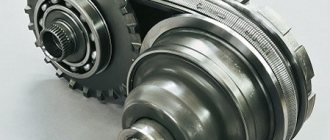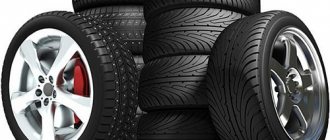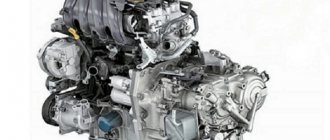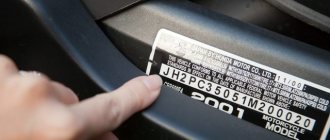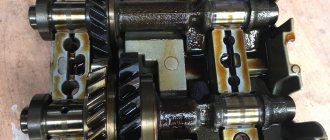The author was given a rather difficult situation - to choose the best from the automakers of two pedantic states. This is quite difficult to do, because local brands confidently occupy leading positions in reliability ratings. And even our machine builders envy the quality of engines and other spare parts.
Technical part
Engines
It seems that the Japanese and Germans took fundamentally different approaches to the design of car engines. Thus, cars from Germany are very often equipped with large-volume engines that have a low degree of boost, but a very long service life. An example is twelve-cylinder Mercedes and Audi engines, as well as BMW engines with a displacement of 4.2 liters or more. However, global trends are gradually forcing Germans to abandon multi-liter power units in favor of highly accelerated engines - evidence of this is Audi cars, which are overwhelmingly equipped with turbocharged engines.
The Japanese initially decided that it was better to follow an intensive path of development, that is, to increase power per liter, and not the engine displacement. They were the first to use direct gasoline injection in mass-produced cars, and also developed combined intake systems and other innovative technical solutions that made it possible to increase engine performance without significantly increasing fuel consumption.
Japanese cars are famous for their efficiency and high power of small engines, which can be installed even on compact models. However, unfortunately, cars from Japan often strive to get ahead of world technical progress and go into mass production without long-term testing, as a result of which their reliability suffers.
Transmission and drive
German cars were among the first in the world to be equipped with robotic gearboxes with a well-developed operating algorithm. The DSG transmission, which has proven itself well on compact and mid-size Volkswagen cars, subsequently began to be installed on models of almost all brands included in the group - Skoda, SEAT, Audi. However, fairly large cars are usually equipped with classic hydromechanical automatic transmissions with a large number of gears - up to ten.
DSG gearbox
Japanese small and middle class cars are very often equipped with continuously variable transmissions, which provide ease of movement in a large city, but do not always allow you to choose a convenient operating algorithm when driving at high speeds on the highway. Large prestigious models are also equipped with hydromechanical automatic transmissions, but the Japanese prefer to use 5–6 stages. After experimenting with robotic gearboxes, Japanese manufacturers decided that it was better to postpone their mass introduction until the future, since the first samples were very inconvenient to operate.
Toyota Hybrid Drive
However, it was in the Land of the Rising Sun that the first mass-produced cars with a hybrid drive were developed, in which the engineers of this country were ahead of the whole world, including their main competitors from Germany. The most popular machines are:
- Toyota Prius;
- Honda Insight;
- Lexus CT 200h.
Chassis
Just a few years ago, the Germans believed that it was better to use simple suspension designs, since they combine reliability and good comfort indicators. However, with the advent of new technologies that make the chassis more durable without increasing its weight, German cars increasingly began to be equipped with complex multi-link suspensions.
BMW multi-link suspension
This approach allows you to achieve ideal controllability of the car, as well as avoid strong vibrations when driving over large bumps. However, it was not possible to do without disadvantages - the chassis became very expensive to manufacture and maintain, which dealt a significant blow to the family budgets of equipment owners from Germany.
In Japan, this process was directed in the opposite direction - if earlier engineers believed that nothing could be better than a multi-link suspension, now they have begun to massively use semi-independent axles, torsion beams and similar structures. The reason for this is quite simple. Previously, there were many complaints about Japanese cars, which were related specifically to the excessively noisy operation of the suspension, as well as the high cost of repairs.
Therefore, it was decided to introduce simplified chassis designs into mass production, which are today used in models such as Lexus IS, Honda Civic and Toyota Corolla. However, this did not affect expensive prestigious cars - they can still be equipped with complex chassis designs.
Safety
It is almost impossible to answer the question of which cars are better in the field of safety, since in this case the contribution of manufacturers from different countries can be considered equal. However, we'll look at the most impressive achievements, starting with the automatic braking system that will soon become mandatory on cars sold in Europe. Many German cars are equipped with it, and tests show that it has very high operating efficiency - a collision can be prevented in almost 60% of cases, and in another 32% the speed is slowed down to a value at which the likelihood of injury is reduced to a minimum. In addition, it was German manufacturers who were the first to use active stabilization systems in their cars, which help prevent skidding and maintain the chosen trajectory even in the most difficult conditions.
Japanese companies believe that it is better to prevent accidents not at the local, but at the global level. They are currently collaborating with American and Scandinavian engineers to develop a design for a vehicle-to-vehicle communication system. It is quite possible that in 10–15 years, Japanese cars will be able to exchange information about the quality of the road surface, the formation of potholes, as well as traffic jams and accidents on certain roads or city streets. With the ideal development of the project, not only cars, but also traffic lights, signs and other road infrastructure will be equipped with transmitters - and it won’t be long until the advent of an absolutely safe autopilot...
Features of Japanese automobile production
Despite differences in the quality of products of individual companies, Japanese automakers are similar in their approaches to organizing work at their enterprises. Initially, in the second half of the 20th century, production was carried out using a much smaller technological base than that of the Europeans, so cars were made simpler and more affordable. At the same time, the conveyor never stopped, and work on quality and manufacturing defects was often carried out after the car was released.
The system later began to restructure processes in most Japanese industries, which had a positive impact on costs. That is, one of the main competitive advantages of Japanese automakers is lower cost (compared to the “Germans”) with wide functionality, high quality and reliability.
In addition, Japanese cars are more unpretentious to harsh environmental conditions, which is important for Russia. The reasons for this are as follows:
- Engine
. German cars are often supplied to Russia with turbocharged engines, which are good in terms of fuel consumption and engine performance.
However, operation in sub-zero temperatures and low fuel quality greatly affect the service life of such engines with a relatively high repair cost compared to atmospheric engines.
However, the presence of supercharging does not necessarily reduce the service life of the engine - with proper operation, it is not a serious disadvantage in terms of reliability and adaptability to harsh environments.
Suspension
. The suspension stiffness on German cars is higher, adjusted for driving on high-speed European autobahns, to which is also added a lower (on average) ground clearance. However, some German low-budget models were created taking into account the low quality of roads in the countries of sale.
. Japanese automatic and manual transmissions are hardly better than those in Germany, where their production has been honed for decades, and there is no doubt about the quality of the engineering.
Car enthusiasts sometimes have doubts about German “robots”, which are more susceptible to Russian weather and road conditions.
Design
German cars initially strived for a classic style - just remember the strict lines of various BMW and Mercedes models. And even today, most models produced in Germany look quite conservative. It is worth remembering Porsche sports cars, whose appearance corresponds to the fashion of the 60–70s of the last century, but not to modern design trends.
That is why German cars are more often chosen by respectable people with established careers, as well as traditional views on life. They are able to emphasize the high status of their owner and provide him with high comfort both during daily trips and during multi-day trips.
But Japanese manufacturers, who also used classic design 20–25 years ago, are now focusing on the avant-garde. Think of the complex, broken body lines of modern Lexus models, the signature Jet Fighter style of Mitsubishi, and the flowing biodesign of Nissan and Infiniti. Such bold experiments attract decisive people with extraordinary thinking - they are said to reject traditional values and are ready to invest money in impressions, rather than in property and capital.
But in fairness, it should be said that many Japanese manufacturers also produce cars in a classic style - these include Toyota and Honda.
Brand
When buying expensive goods, people first of all pay for the brand, the badge on the radiator grill. He seems to be hinting - look, this car smells of success and money. In this regard, the Germans are much more expensive. All these Mercedes, BMWs and Audis are bought by wealthy people: dentists, politicians, entrepreneurs.
Toyotas are much more democratic, although the Japanese brand also has cars that symbolize business and solidity. The same Toyota Camry or, for example, Toyota Land Cruiser.
Preferences
German car companies have strived to create expensive luxury cars almost since their founding. This has led to the fact that the niche of budget transport in Germany is occupied by foreign manufacturers, including Japanese. The situation is no better with small-sized cars convenient for the city - the Germans began to develop this direction only in the late 90s. Of course, now lovers of German cars can purchase models such as the Audi A1 or Mercedes A-Klasse, but they also cannot be called very compact and cheap.
The Japanese have traditionally been leaders in the production of small cars, including ultra-compact vehicles, which they call “kei cars.” Such cars are less comfortable, but they have better maneuverability and are more convenient for use in large cities. But in the segment of large cars, Japanese models are represented mainly by crossovers and SUVs, while much less attention is paid to prestigious sedans.
Engines
When developing engines, the Japanese and Germans took different paths. Europeans are accustomed to counting money, but the Japanese also value efficiency. True, the latter moved towards hybrid engines, while the Germans focused on small-displacement units or diesel engines.
The difference in fuel is approximately 3 liters per hundred kilometers or 135,000 rubles per 100,000 km. It may not be an ironclad argument, but it’s still an argument.
Individual choice
There is no need to say that cars from Japan or Germany are better than competing models. Globalization leads not only to the use of common technical solutions, but also to targeting common markets. As a result, the differences between cars of different brands are erased, and they become similar to each other. However, there is still a difference between Japanese and German cars.
Briefly, it can be expressed as follows: German cars should be purchased by adherents of traditional values and classic style, but Japanese cars are more likely intended for people who like avant-garde design solutions and the rhythm of life in modern cities.
conclusions
By and large, both German and Japanese cars look interesting, presentable and luxurious. But the Japanese are still closer to the people, while the “Germans” occupy a premium niche. The people still have Volkswagen. Japanese cars are better adapted to our roads. The hardware is cheaper, gasoline, roads, the price of the car itself - in a word, there are enough arguments. Yes, Toyota is not the same anymore, but in terms of reliability and availability it still outperforms the German autobahn leaders.
Error in the text? Select it with your mouse! And press: Ctrl + Enter
How are German and Japanese automakers similar?
In addition to reliability and quality, to which quite a lot of the text above was devoted, there are other features that are characteristic of both schools:
- Consistency
. Today, both of them use a similar approach to updating the model range - from year to year, a new model often includes only small changes and improvements to the previous one. At the same time, truly new cars are released quite rarely; current production is being improved and honed.
. In part, this point is related to the previous one - the ability to replicate their technologies across many production facilities and millions of cars produced allow buyers to be confident in their expectations from the purchase. Deviations from technical characteristics, non-compliance with declared indicators, the risk of purchasing a low-quality copy - all this is protected against by the constantly improving conveyor and production technologies.
